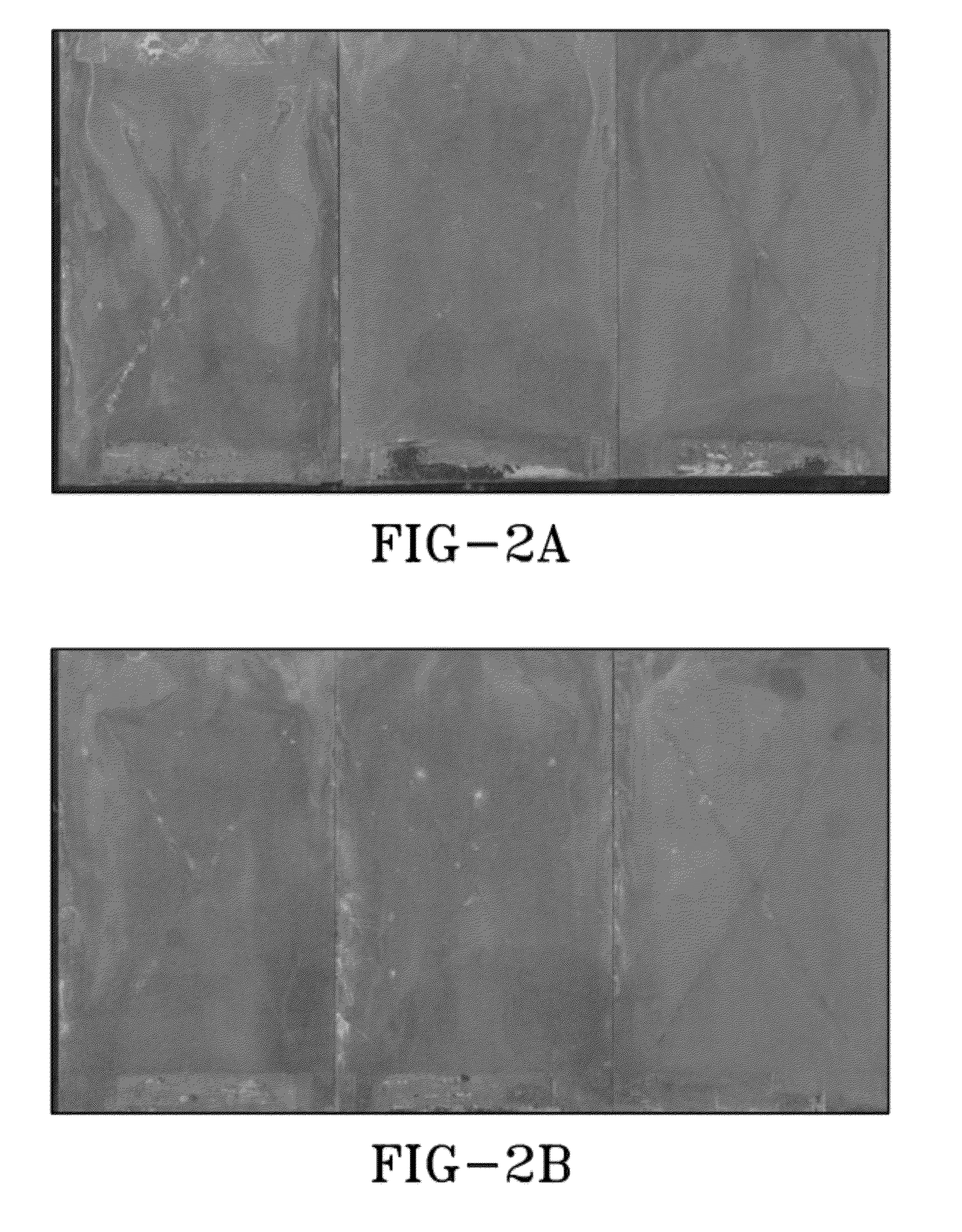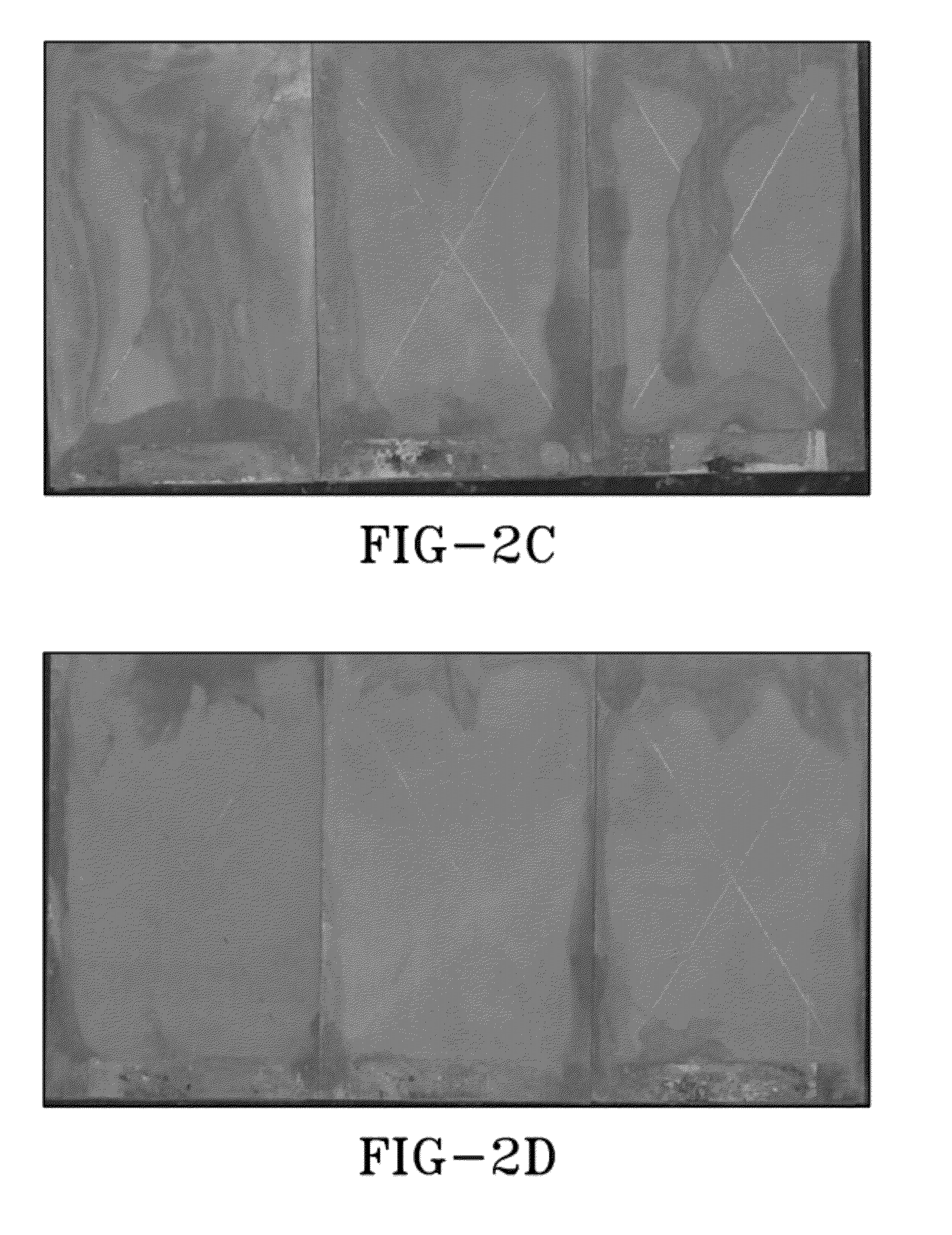Active aluminum rich coatings
a technology of active aluminum and coatings, applied in the field of metal surfaces, can solve the problems that the production of such particles may make their use impractical, and achieve the effect of low cost and easy mixing and application
- Summary
- Abstract
- Description
- Claims
- Application Information
AI Technical Summary
Benefits of technology
Problems solved by technology
Method used
Image
Examples
example 1
[0048](DP-1 and DP-2) 127.6 grams of a 2” processed aluminum-zinc-indium powder was added to 50.0 grams of moisture curing polyurethane binder and 1.0 grams of wetting agent (diethyleneglycol alkylether) (Composition DP-1). A second batch of this same composition was prepared. To it, 5.0% by weight of hydrotalcite clay corrosion-inhibiting pigment (Hybricor 204) was added and thoroughly mixed (Composition DP-2). Primers were allowed to stand for 30 minutes and applied, using a standard air paint gun, to 2024-T3 and 7075-T6 aluminum alloy panels which had been conversion coated with a non-chromated coating conforming to MIL-DTL-81706 Type II.
example 2
[0049]Panels with coatings made from DP-1 and DP-2 as prepared in Example 1. Coatings were applied to aluminum 2024 and 7075 panels which had been mechanically abraded or treated with MIL-DTL-81706 TYPE II “TCP” a commercial conversion coating. Panels were scribed through the primer and into the aluminum alloy with a carbide tipped stylus in an X pattern, with each line of the X approximately 4 inches long. One set was exposed to ASTM B117 neutral salt fog, one set to ASTM G85 Annex 4 SO2 salt fog, and one set placed on beach front exposure racks at Kennedy Space Center.
[0050]FIGS. 2a to 2i show how DP-1 and DP-2 performed compared to a high-performance non-chromated primer qualified to MIL-PRF-23377 Class N in ASTM B117 neutral salt fog at 2000 hours and at the Kennedy Space Center beachfront test site after 4 months. The DP-1 and DP-2 are equal to or better than the MIL-PRF-23377 Class N controls. DP-2 shows less corrosion that DP-1 on 2024 and both are clearly better than the con...
example 2a
[0051]Galvanic test panels using coatings prepared in Example 1 were prepared and placed on beach front exposure racks along with panels and coatings described in Example 2. FIGS. 3a to 3e show the coatings after four months. Table 2 shows undercutting ratings at various intervals compared to control coatings made using MIL-PRF-2337 Class N (non-chromated) primer. The DP-1 and DP-2 coatings outperform all coatings, including chromated primers qualified to MIL-PRF-23377 Class C and MIL-PRF-85582 Class C.
TABLE 2ASTM D 1654 Table 2 Rack 14Jul. 8,Jul. 22,Aug. 5,Aug. 19,Sep. 2,Sep. 16,Sep. 30,Oct. 30,20092009200920092009200920092009Panel #LocationNew2 weeks4 weeks6 weeks8 weeks10 weeks12 weeks4 month2024 DP-11AB10101010101010102024 DP-21CD10101010101010107075 DP-11EF1010101010101077075 DP-21GH10101010101010102024 MIL-2AB109974444PRF-23377Class N7075 MIL-2EF1010999997PRF-23377Class N
PUM
| Property | Measurement | Unit |
|---|---|---|
| Length | aaaaa | aaaaa |
| Fraction | aaaaa | aaaaa |
| Fraction | aaaaa | aaaaa |
Abstract
Description
Claims
Application Information
 Login to View More
Login to View More - R&D
- Intellectual Property
- Life Sciences
- Materials
- Tech Scout
- Unparalleled Data Quality
- Higher Quality Content
- 60% Fewer Hallucinations
Browse by: Latest US Patents, China's latest patents, Technical Efficacy Thesaurus, Application Domain, Technology Topic, Popular Technical Reports.
© 2025 PatSnap. All rights reserved.Legal|Privacy policy|Modern Slavery Act Transparency Statement|Sitemap|About US| Contact US: help@patsnap.com



